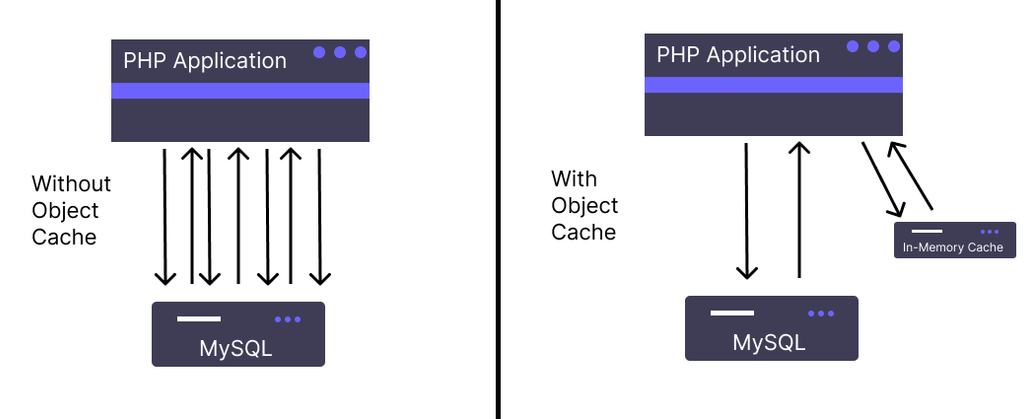Object Caching is the most important part of WordPress when it comes to speeding up dynamic requests and scaling.
If the requests to your website generate a large number of database queries, your database server’s resources can become overwhelmed. This results in sluggish page loading performance, slow query times, and ultimately, site crashes!

Table of Contents
Persistent Object Caching
WordPress has its own object caching mechanism out of the box. It’s automatically storing any data from the database in PHP memory to prevent unnecessary queries. However, this process needs to repeat every request. Therefore it’s not an efficient way.
In order to make it efficient to use the cached data without running queries for each request, we can use persistent object cache drop-ins. We need to know two key components before starting using a persistent object cache.
Data Store: Where to keep the data. Redis and Memcached servers are popular. This needs to be installed separately. You can configure them as distributed memory object caching system. (Adding multiple backend servers possible for Memcached, Redis)
PHP Driver: Your hosting needs to have proper drivers to use object cache drop-ins.
How does Powered Cache Provide WordPress Object Caching
Powered Cache automatically, checks the drivers you have installed and displays only the available options on the Object Cache selection. We do this for preventing misconfiguration. Once you have chosen the object cache backend you want to use, it will create the drop-in file on-the-fly.
The most cases, persistent backend servers are installed on the same host. In that case, you don’t have to make configuration adjustments since the default settings are configured for that. However, if you have a different setup, you can check out our documentation here.
Speed Up Dynamic Pageviews
Persistent database objects are a must when scaling WordPress for logged-in users and it will speeds up PHP execution time. Without this, the inefficiency of regenerating the same cached data over and over again will seriously affect your website’s performance as site complexity and dynamic traffic increase.
Complexity and Cache Invalidation
Object Cache is great and recommended to have it when it’s possible. However, it’s good to keep in mind that you are adding another layer of caching to WordPress. So, it will increase the complexity of your WordPress setup.
Cache Invalidation needs to be done wisely, especially sometimes 3rd plugins don’t invalidate the cache properly when the stored data changes. And this might result in unintended behavior.
Transients
Another benefit of having a persistent object cache is that transients will store in memory instead database.
We recommend using the Object Cache feature in conjunction with other caching and optimization features. This article is only about the object cache feature. If you are looking for more information about other optimization features, you can learn more here. And you can always check the documentation about the page cache and check WordPress documentation about it.

